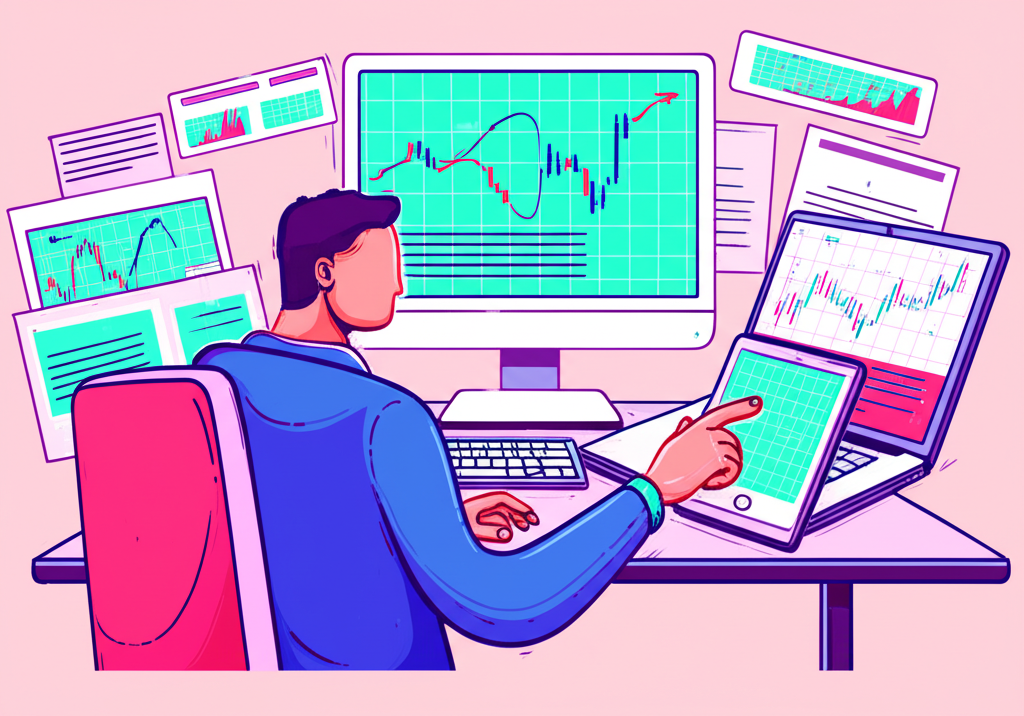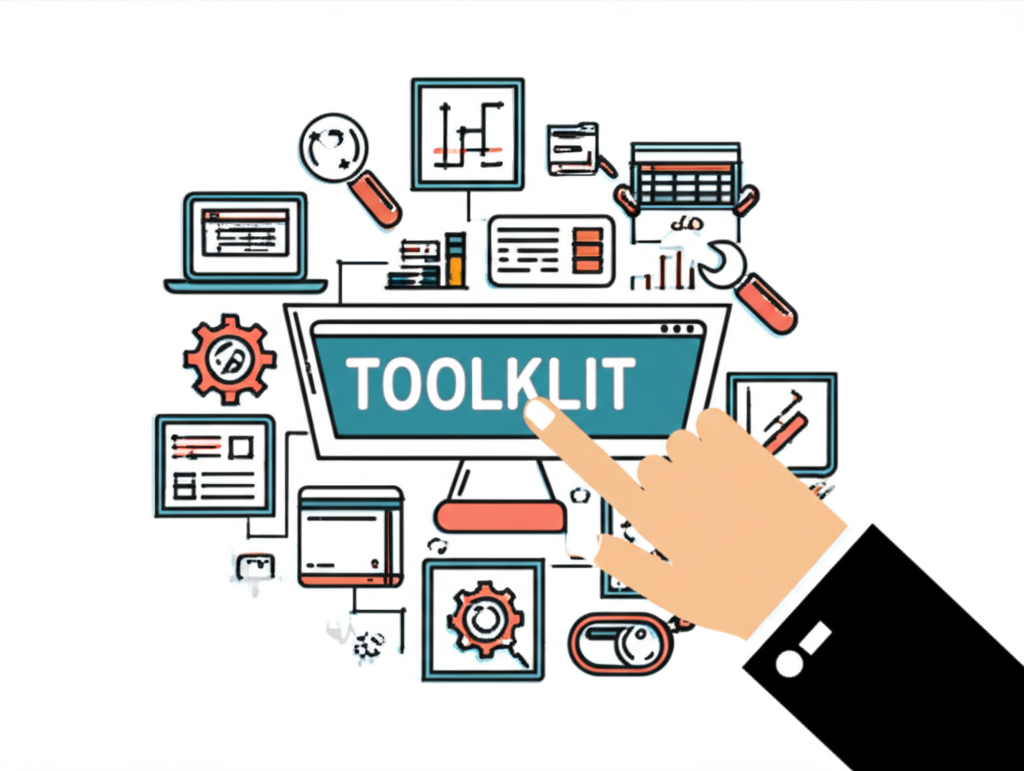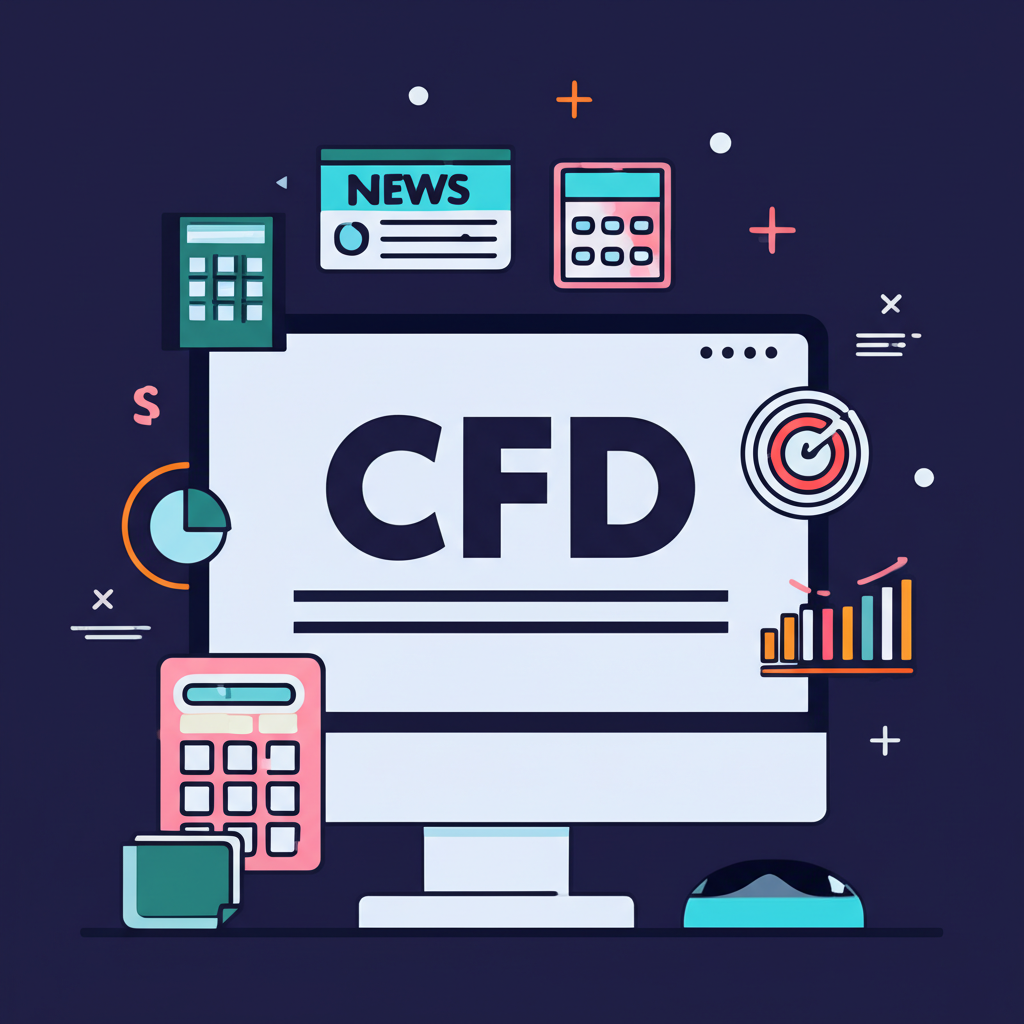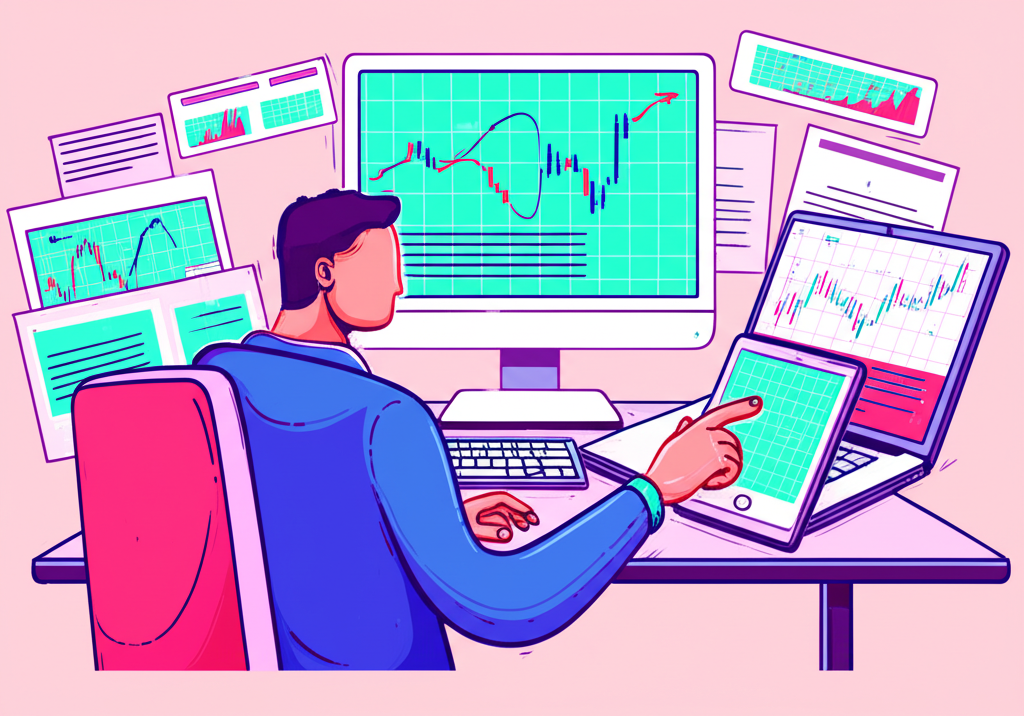Introduction: Navigating the World of CFD Trading Tools

In the fast-moving and intricate world of Contract for Difference (CFD) trading, having the right tools isn’t just helpful—it’s essential for making informed choices and managing risk effectively. CFDs allow traders to speculate on price movements across a wide range of financial markets, from forex and commodities to indices and individual stocks, all without owning the underlying assets. However, because CFDs are traded on margin, both gains and losses can quickly multiply, making disciplined use of reliable tools a cornerstone of responsible trading.
This in-depth guide explores the full spectrum of CFD trading tools available today. Beyond the basic trading interface, a comprehensive toolkit includes analytical platforms, risk calculators, news feeds, and educational resources—all designed to improve decision-making and performance. Our goal is to break down these components in clear, practical terms, helping you understand how each tool functions, how to choose the best options, and how to assemble a personalized set of resources that align with your experience level and trading goals.
What Exactly Are CFD Trading Tools?

At its most basic, a CFD trading tool refers to any software, platform, or digital resource that supports the process of analyzing, entering, and managing CFD positions. While trading platforms themselves are the most visible tools, the ecosystem extends far beyond them to include a variety of supporting instruments that enhance strategy and execution.
- Trading Platforms: These serve as the main hub where traders access the markets, view price charts, place orders, and monitor open positions. Popular examples include MetaTrader 4 and 5, cTrader, and custom-built platforms offered by brokers.
- Analytical Software: Tools that offer advanced charting, technical indicators, and deep market analysis capabilities, enabling traders to identify trends and potential trade setups with greater precision.
- Risk Management Utilities: Built-in or standalone tools such as position size calculators and margin estimators that help traders control exposure and avoid over-leveraging.
- Market Information Resources: Real-time news feeds, economic calendars, and sentiment indicators that provide context for price movements driven by external events.
- Educ游戏副本 Resources: Tutorials, webinars, and market insights that help traders—especially beginners—build foundational knowledge and become more confident in using trading tools effectively.
Recognizing this broader toolkit is vital. Successful traders don’t rely on a single platform; they combine multiple tools to create a well-rounded, informed approach to the markets.
The Core of Your Strategy: Top CFD Trading Platforms Reviewed

The trading platform is the heart of your CFD trading activity. It determines how quickly you can act, how clearly you can analyze the market, and how efficiently you can manage your positions. Choosing the right one can make a meaningful difference in your trading outcomes.
How We Evaluate the Best CFD Trading Platforms
When assessing CFD trading platforms, we take a comprehensive approach that considers both functionality and safety. Our evaluation includes the following key factors:
- Regulation and Security: We prioritize platforms offered by brokers regulated by top-tier authorities such as the UK’s Financial Conduct Authority (FCA), Australia’s ASIC, or Cyprus’s CySEC. Strong regulatory oversight ensures fund protection, fair pricing, and transparent operations.
- Fees, Spreads, and Commissions: Trading costs vary widely. We analyze spreads, commissions (especially on share CFDs), overnight financing charges, and any hidden fees like inactivity or withdrawal penalties. Transparent pricing models are a must.
- Tradable Assets: A diverse range of available instruments—such as forex pairs, indices, commodities, stocks, and cryptocurrencies—allows for greater flexibility and portfolio diversification.
- Platform Features and Tools: We look for advanced charting, a wide selection of technical indicators, flexible order types (market, limit, stop-loss, OCO, trailing stops), and support for algorithmic trading.
- User Experience (UX): A clean, intuitive interface helps both new and experienced traders navigate efficiently, reducing the chance of costly errors during fast-moving markets.
- Customer Support: Responsive, knowledgeable support through live chat, phone, or email is essential for resolving technical or account-related issues quickly.
- Mobile App Functionality: A robust mobile app with full trading capabilities allows traders to stay connected and react to market changes no matter where they are.
Best CFD Trading Platforms for Overall Performance
Leading CFD trading platforms stand out by combining reliability, functionality, and accessibility. While preferences may vary, certain platforms consistently deliver strong performance across multiple areas.
MetaTrader 4 and MetaTrader 5 remain industry benchmarks, widely used for their powerful charting, extensive library of technical indicators, and support for automated trading via Expert Advisors (EAs). cTrader is another top contender, known for its clean interface, transparent pricing structure, and fast execution speeds. Many brokers also develop proprietary platforms tailored to their client base, often integrating unique research tools, social trading features, or simplified workflows.
Below is a comparison of key features across the most widely used platform types:
| Feature | MetaTrader 4/5 (Commonly Offered) | cTrader (Commonly Offered) | Proprietary Platforms (Broker-Specific) |
|---|---|---|---|
| Charting Tools | Advanced, highly customizable, large indicator library | Modern, intuitive, robust indicators, depth of market | Vary widely, often user-friendly with unique features |
| Automated Trading | Yes (Expert Advisors) | Yes (cBots) | Depends on platform; some offer, others don’t |
| Order Types | Comprehensive (market, limit, stop, trailing stop) | Comprehensive, advanced order management | Standard to advanced, often streamlined |
| Mobile Trading | Highly rated iOS/Android apps | Highly rated iOS/Android apps | Dedicated mobile apps, varying functionality |
| User Experience | Steeper learning curve for beginners, powerful for pros | Modern, clean, user-friendly, suitable for all levels | Often designed for ease of use, broker-specific feel |
| Regulation Focus | Offered by many regulated brokers globally | Offered by many regulated brokers globally | Broker’s regulation applies directly |
Best CFD Trading Platforms for Beginners
For those just starting out, the ideal platform should be easy to use, rich in educational support, and offer a safe environment to practice. Key features that benefit new traders include:
- Intuitive Interface: A simple, clutter-free layout that makes navigation straightforward without overwhelming users with advanced tools.
- Demo Accounts: A virtual trading environment where beginners can test strategies and learn platform functions without risking real money.
- Educational Resources: Access to step-by-step guides, video tutorials, and market glossaries that explain core concepts and tools.
- Responsive Customer Support: Easy access to help through live chat or email, especially during off-hours when questions arise.
- Low Minimum Deposits: While not a platform feature per se, beginner-friendly brokers often have low entry thresholds, making it easier to start small.
Platforms like Plus500 are known for their simplicity and clear interface, while eToro appeals to newcomers with its social trading model, allowing users to follow and copy experienced traders. Some brokers also offer simplified versions of MT4 or MT5, or beginner-focused dashboards within their proprietary systems. The key is finding a balance between ease of use and room to grow as your skills develop.
Beyond the Platform: Essential Standalone CFD Trading Tools

While the trading platform is central, a complete CFD toolkit includes external tools that enhance analysis, refine strategy, and strengthen risk control. These resources often give serious traders a measurable edge in the market.
Advanced Charting and Technical Analysis Software
For traders who rely on technical analysis, standalone charting tools offer capabilities that go beyond what most standard platforms provide. These tools allow for deeper analysis of price patterns, trend identification, and precise entry and exit planning.
- TradingView: A powerful web-based platform favored for its extensive library of indicators, drawing tools, multi-timeframe analysis, and active community where traders share ideas and strategies. Many CFD brokers integrate TradingView directly into their systems or allow its use alongside live trading.
- MetaTrader 4/5 (Advanced Features): While primarily a trading platform, MT4 and MT5 are often used independently for chart analysis, especially when traders create custom indicators or backtest strategies.
- Specialized Charting Packages: Some professional traders use dedicated software that offers advanced historical data analysis, unique indicators, or deeper customization for niche strategies.
These tools help traders move beyond guesswork, supporting decisions with detailed technical insights and historical price behavior.
Risk Management Tools and Calculators
Effective risk management is not optional in CFD trading—it’s the foundation of long-term survival. Dedicated tools help traders quantify risk and make disciplined decisions.
- Position Size Calculators: These tools determine the correct lot size based on account balance, risk percentage per trade, and stop-loss distance, helping prevent overexposure.
- Margin Calculators: Critical for understanding how much capital is required to open and maintain a position, reducing the risk of unexpected margin calls.
- Stop-Loss and Take-Profit Orders: Built into most platforms, these orders automatically close trades at predefined levels, locking in profits or limiting losses without constant monitoring.
- Risk-Reward Ratio Calculators: These help evaluate whether a trade offers favorable potential returns relative to its risk, encouraging disciplined trade selection.
Consistently using these tools helps protect capital and promotes a more structured, less emotional approach to trading, as emphasized in Investopedia’s guide on risk management in trading.
Market News, Sentiment Analysis & Economic Calendars
Fundamental factors often drive significant price movements, even in CFD markets. Staying informed through external resources is crucial for anticipating volatility and understanding market direction.
- Economic Calendars: Websites like ForexFactory and Investing.com list upcoming economic releases—such as central bank decisions, employment data, and inflation reports—that can trigger sharp market moves.
- Market News Feeds: Real-time updates from trusted sources like Reuters, Bloomberg, and the Financial Times keep traders aware of geopolitical developments, earnings reports, and regulatory changes.
- Sentiment Analysis Tools: These assess market mood by analyzing news sentiment, social media trends, and trader positioning. A shift in sentiment can signal potential reversals or confirm ongoing trends.
Integrating these tools into your daily routine helps you understand not just *what* is happening in the markets, but *why*—giving you a strategic advantage.
Backtesting and Algorithmic Trading Software
For experienced traders, testing strategies and automating execution can significantly improve consistency and performance.
- Backtesting Software: Available within platforms like MT4/MT5 or as standalone tools, backtesting allows traders to test their strategies against historical data to assess performance before using real funds.
- Algorithmic Trading Software (Expert Advisors/cBots): These programs execute trades based on predefined rules, eliminating emotional decisions and enabling 24/7 market monitoring. MetaTrader supports Expert Advisors, while cTrader uses cBots.
While these tools require some technical knowledge or access to pre-built algorithms, they are invaluable for developing data-driven, repeatable trading systems.
Key Factors When Choosing Your CFD Trading Tools
Selecting the right tools is a critical step that can shape your trading success. The following considerations should guide your decision-making process.
Regulation and Security: Trust is Paramount
Your first priority should always be the regulatory standing of the broker behind the platform. Trading with an unregulated provider exposes you to significant financial and operational risks. Opt for brokers regulated by reputable authorities such as the FCA, ASIC, or CySEC. These regulators enforce strict rules on capital segregation, transparency, and dispute resolution.
It’s important to note that **CFD trading is not available to retail traders in the United States** due to restrictions from the CFTC and SEC. U.S. residents typically turn to regulated alternatives like futures or options. For traders outside the U.S., verifying strong local or international regulation is essential. Beyond compliance, look for platforms that use SSL encryption, two-factor authentication (2FA), and secure account protocols to protect your personal and financial information.
Fees, Spreads, and Commission Structures
Trading costs directly affect profitability. CFD brokers typically earn revenue through several channels:
- Spreads: The difference between the buy and sell price. Tighter spreads reduce your entry and exit costs.
- Commissions: Often applied to share CFDs, these are fixed fees per trade.
- Overnight Financing Fees (Swaps):strong> Charged when holding positions overnight, these can add up over time.
- Non-Trading Fees: Watch for inactivity fees, withdrawal charges, or currency conversion costs that can erode returns.
Compare the total cost structure across brokers. Some offer commission-free trading with wider spreads, while others charge commissions but provide tighter spreads. The best model depends on your trading frequency and strategy.
Available Assets and Market Access
Ensure the platform supports the markets you want to trade. A broad selection includes:
- Forex: Major, minor, and exotic currency pairs.
- Indices: Global benchmarks like the S&P 500, NASDAQ, FTSE 100, and DAX.
- Commodities: Gold, silver, crude oil, natural gas, and agricultural products.
- Shares: CFDs on individual stocks from major exchanges worldwide.
- Cryptocurrencies: Bitcoin, Ethereum, and other popular digital assets.
Access to diverse markets increases opportunity and allows for strategic diversification, reducing reliance on any single asset class.
User Experience and Mobile Accessibility
A well-designed platform enhances efficiency and reduces errors. Look for intuitive navigation, customizable layouts, and quick access to key functions. A strong mobile app is equally important—many traders rely on smartphones to monitor markets and execute trades while on the move. The best mobile apps mirror desktop functionality, including advanced charting, order management, and real-time alerts.
Customer Support and Educational Resources
Reliable customer service can make a big difference, especially when technical issues arise or account questions need immediate answers. Look for 24/5 or 24/7 support via live chat, phone, and email. Additionally, evaluate the quality of educational content. Brokers that offer detailed tutorials, webinars, and market analysis help traders build knowledge and confidence. As highlighted by Babypips in their broker reviews, access to learning resources is a strong indicator of a broker’s commitment to client success.
Understanding the Risks of CFD Trading
While CFD trading tools can enhance performance, it’s crucial to recognize the inherent risks involved. CFDs are complex, high-risk instruments, especially due to leverage.
- Leverage: This allows you to control large positions with a small amount of capital, but it also means losses can exceed your initial deposit. Even small market moves can result in significant losses.
- Margin Calls: If losses deplete your account equity below the required margin level, you may be forced to deposit additional funds or face automatic position closures.
- Market Volatility: Rapid price swings can lead to slippage, where orders are filled at less favorable prices than expected, particularly during news events.
- Counterparty Risk: Since you’re trading directly with the broker, their financial stability and integrity matter. Regulated brokers reduce this risk, but it’s still a factor to consider.
Always trade with money you can afford to lose, and make full use of risk management tools to protect your capital.
Conclusion: Building Your Optimal CFD Trading Toolkit
Success in CFD trading isn’t just about spotting opportunities—it’s about building a reliable, well-rounded toolkit that supports informed decision-making and disciplined risk management. From your core trading platform to advanced analytical tools and risk calculators, each component plays a role in shaping your trading outcomes.
Building the right toolkit is an ongoing process. Start by evaluating platforms based on regulation, cost, asset variety, and usability. Then, expand your resources with tools that enhance analysis and strategy development. Beginners should focus on simplicity, education, and practice accounts, while experienced traders can explore automation, backtesting, and advanced charting.
Ultimately, long-term success comes from continuous learning, adaptation, and the smart use of technology. By carefully selecting and integrating the right CFD trading tools, you can improve your performance, manage risk more effectively, and trade with greater confidence in a dynamic and challenging market environment.
What are the most essential CFD trading tools for a beginner?
For beginners, the most essential CFD trading tools include a user-friendly trading platform, a robust demo account for practice, and access to comprehensive educational resources (tutorials, webinars). Additionally, basic risk management tools like stop-loss and take-profit orders are crucial from the outset.
Are CFD trading tools legal and regulated in the US?
No, CFD trading is generally not permitted for retail traders in the United States due to stringent regulations by bodies such as the CFTC and SEC. Therefore, CFD trading tools are not legally available for use by US retail traders. US residents typically trade other leveraged products like futures or options.
Can I trade CFDs on my mobile device using specific apps?
Yes, most reputable CFD brokers offer dedicated mobile trading applications for iOS and Android devices. These apps typically provide full functionality, allowing you to monitor markets, view charts, place orders, and manage your positions while on the go. Popular platforms like MetaTrader 4/5 and cTrader also have highly-rated mobile versions.
What’s the difference between a CFD trading platform and other CFD tools?
A CFD trading platform is the primary software interface where you directly execute trades, access market data, and manage your account. Other CFD tools are complementary resources that enhance your trading decisions. These can include standalone advanced charting software (e.g., TradingView), risk management calculators, economic calendars, and backtesting software, which may or may not be integrated into the trading platform itself.
How can I evaluate the security and reliability of a CFD trading tool?
To evaluate security and reliability, first verify the broker’s regulatory status with a tier-one authority (e.g., FCA, ASIC). Ensure the platform uses robust encryption (SSL), offers two-factor authentication (2FA), and segregates client funds from company operational funds. Look for positive reviews regarding platform stability and execution speed, and check for a strong track record in the industry.
Are there any free CFD trading tools available for practice or analysis?
Yes, many brokers offer free demo accounts that allow you to practice CFD trading with virtual funds in a real market environment. For analysis, platforms like TradingView offer a free basic plan with extensive charting capabilities. Some brokers also provide free access to economic calendars, news feeds, and basic analytical tools as part of their service package.
What features should I prioritize when choosing a CFD trading platform?
Prioritize strong regulation and security, competitive spreads and fees, a wide range of tradable assets, robust charting and analytical tools, and a user-friendly interface. Responsive customer support and the availability of a reliable mobile app are also crucial for a comprehensive trading experience.
How does leverage impact my use of CFD trading tools and overall strategy?
Leverage allows you to control a larger position with a smaller initial capital, amplifying both potential profits and losses. When using CFD trading tools, leverage means that even small price movements can significantly impact your account balance. It necessitates rigorous risk management using tools like position size calculators and strict stop-loss orders to prevent rapid and substantial losses.
Do CFD trading tools offer features for automated or algorithmic trading strategies?
Yes, many advanced CFD trading platforms, such as MetaTrader 4/5 (with Expert Advisors) and cTrader (with cBots), offer integrated features for automated or algorithmic trading. These allow traders to program their strategies to execute trades automatically based on predefined rules, removing emotional bias and enabling continuous market monitoring.
What specific risk management tools are crucial for every CFD trader?
Every CFD trader should utilize stop-loss orders to limit potential losses, take-profit orders to secure gains, and position size calculators to determine appropriate trade sizes based on their risk tolerance. Margin calculators are also vital to understand capital requirements and avoid margin calls. These tools are fundamental for preserving capital and ensuring sustainable trading.

留言